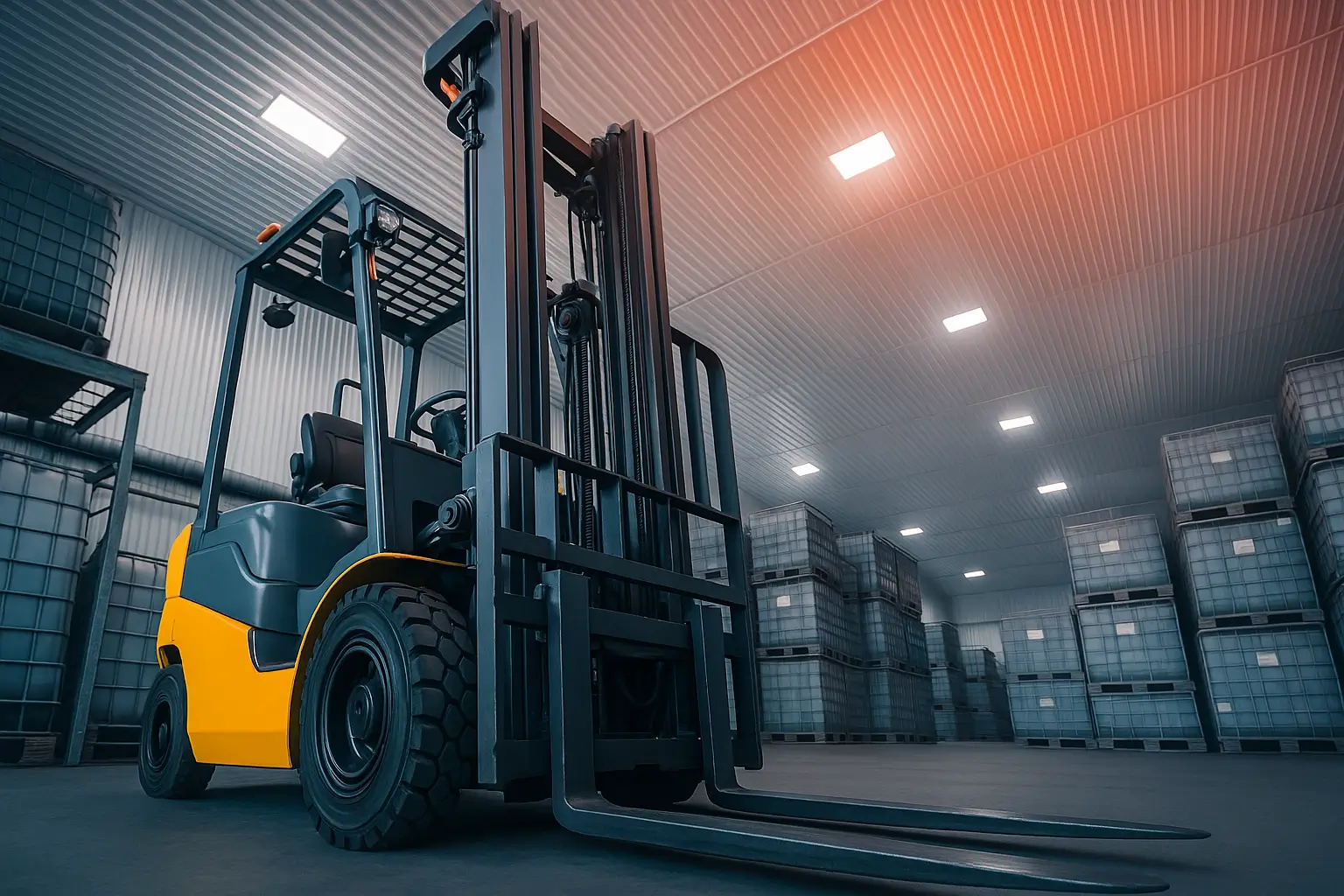Workers in warehouses often lift pallets from the side. They use the stringers, which are the thicker support beams. It’s a much better grip than trying to lift from the notched end.
Side lifting improves balance and keeps the load steady. This makes the process safer and helps prevent pallet damage.
For heavier loads, use the stringer side of 4-way pallets. You can pick them up from any direction, but stringer side is still best.
Understanding Pallet Structure and Types
Before you go lifting a pallet, it helps to know how it’s built and what kinds are out there.
Basic Pallet Components
Most pallets, especially the standard ones for grocery and shipping, follow GMA specs. Here’s a quick breakdown:
- Stringers – These are the long boards that run along the sides. They hold everything together and keep the pallet strong.
- Deckboards – These are the flat boards on the top and bottom where stuff sits.
- Notches are small cuts in the stringers. They let forklift forks slide in at different angles.
Common Pallet Types
There are two main kinds of pallets when it comes to forklift access:
2-Way PalletsThese only let a forklift enter from two opposite sides. They’re built a bit simpler, which makes them pretty sturdy and easier to fix—especially the wooden ones. They also tend to be cheaper since they cost less to make.
4-Way Pallets You can pick these up from any side. This makes them very flexible for moving items.
There are two subtypes:
Partial 4-way pallets: They have notched stringers on one side. This design lets most forklifts pick them up from any side. However, a pallet jack can only lift them from two sides.
True 4-way pallets (block pallets) can be accessed by a forklift or pallet jack from any side. This feature gives them great versatility in handling.
Industry Standards for Pallet Lifting
The Stringer Side Standard
Most people in the industry say it’s best to lift pallets from the stringer side — that’s the wider part.
It’s a common safety tip and something a lot of pros stand by.
Rationale Behind the Standard
Lifting from the stringer side is prescribed because:
The wider side of the pallet has reinforced beams, called stringers. These run along the pallet’s length and give extra support for the forks when lifting heavy loads.
Lift from the stringer side to spread the load evenly across the forks. This keeps the balance right and stops the load from shifting while moving.
Stringers boost stability by offering a strong, steady surface for forklift tines. This helps lower the chance of pallets tipping or moving while being lifted.
Safety Implications of Proper Pallet Lifting
Grabbing pallets from the correct end really matters. It helps keep both people and stuff safe.
Preventing Pallet Damage
Lifting from the wrong side—like the deck boards or the skinnier end—makes pallets way more likely to snap.
That not only wrecks the pallet but could also mess up whatever you’re hauling.
Reducing Workplace Accidents
Picking up the pallet from the right side helps keep things safe. It lowers the chances of dropping stuff or breaking the pallet.
A lot of injuries happen just because people aren’t handling materials the right way.
Proper Forklift Technique
When inserting forks into a pallet, operators should ensure that both forks go all the way in.
Inserting the forks halfway creates stress on the pallet. This can lead to cracks in the upper slats or lower stringers at the raised end.
This is a common reason for pallet damage in warehousing.
Special Considerations for Different Pallet Types
The usual rule is to lift from the stringer side. However, some pallet types need special attention.
4-Way Pallet Considerations
4-way pallets offer more lifting options. You can insert forks from any of the four sides.
4-way pallets are great for tight spaces. They make it easier to move items with a forklift.
The stringer side remains stable, even with some flexibility. This is true, especially when carrying heavier loads.
Block Pallet Advantages
Block pallets are super sturdy and can be lifted from all four sides. They’re built tough with strong materials, so they hold up better than most other pallets.
Sure, they cost a little more. But they last longer and work better in many situations. This is true, especially if you move or reuse pallets often.
Weight Capacity Considerations
Operators need to think about which end to lift. They must also consider the pallet’s weight capacity based on its use.
Types of Load Capacity
Pallets have different weight capacities depending on how they’re being used:
Static Load Capacity: This refers to the weight-bearing capacity of a pallet with a load at rest.
Dynamic Load Capacity: This is the least weight a pallet can hold when lifted and moved by a forklift.
Edge Rackable Load Capacity: This is the most weight a pallet can hold when it’s on a rack with two edges supported. It’s important for standard pallet racking that uses front and rear beam support.
The standard GMA stringer pallet holds at least 2,500 pounds. In contrast, a GMA block pallet can support loads of up to 4,600 pounds.
Operators must consider these capacities when determining how to handle pallets safely.
Useful Summarization Table
| Pallet Type | Standard Lifting End | Typical Lift Equipment | Key Considerations | Common Capacity Range |
|---|---|---|---|---|
| 2-Way Pallet | Stringer Side (long side) | Forklift, Pallet Jack | Provides maximum support and stability; notched for fork entry on long side only | 2,000–5,000 lbs |
| 4-Way Pallet (Block) | Any Side (prefer long side for heavy loads) | Forklift, Pallet Jack | Greater flexibility; stringer/long side preferred for heavy loads | 2,000–6,000 lbs |
| Pallet Lift Table | Platform matches pallet | Hydraulic/Electric Scissor Lift Table | Platform size must fit pallet; load should be centered for safety | 1,500–5,000 lbs |
| Pallet Lift Table w/ Carousel | Platform matches pallet | Lift Table with Rotating Top | Allows for easy access and rotation; follow platform capacity | 1,500–4,000 lbs |
Always grab regular two-way pallets from the long side. Everyone in the industry does this. It provides better support and prevents damage to your pallets.
For fancier four-way block pallets, you can lift from any side. But the long side is your best choice, especially for heavy or wobbly items.
When using lift tables, ensure your platform fits your pallet size. Also, don’t move anything heavier than your equipment can handle. And of course, follow all those safety guidelines to keep yourself and your gear in good shape.
Use this cheat sheet to learn how to lift different pallets safely in warehouses.



Leave a Reply